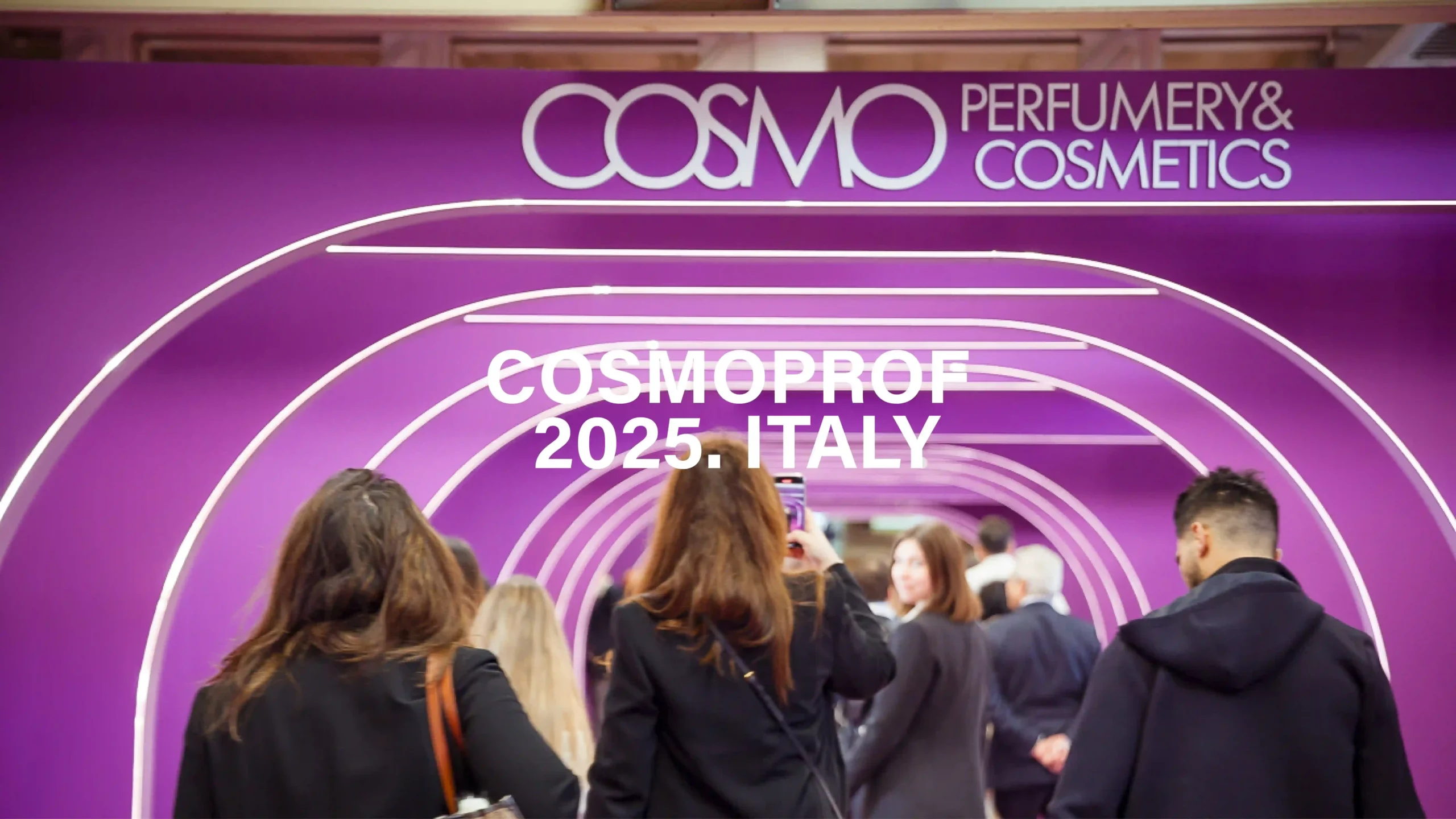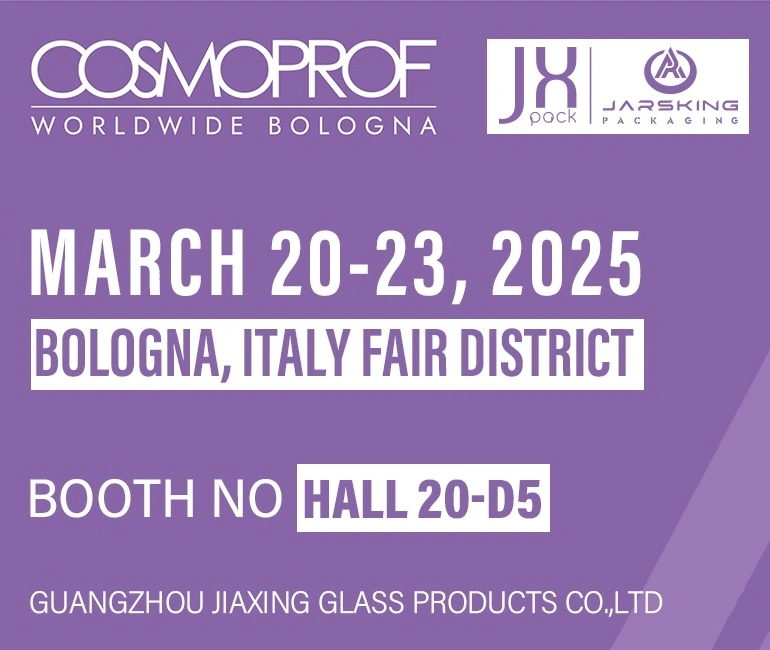The European cosmetic industry is a powerhouse of innovation, sustainability, and luxury, setting global trends in skincare, makeup, haircare, and fragrance. As one of the world’s largest beauty markets, valued at over €96 billion, Europe is home to some of the most prestigious brands, advanced regulations, and cutting-edge packaging innovations.
Each year, the Cosmoprof Bologna trade show brings together thousands of industry professionals, brands, and suppliers to explore the latest trends, packaging solutions, and regulatory updates shaping the future of cosmetics.
In this Blog, we dive into:
• The significance of Cosmoprof Bologna and its role in the global beauty industry.
• A detailed analysis of the European cosmetic market, including key trends and growth sectors.
• Case studies of leading brands innovating in sustainability and packaging.
• Regulatory updates impacting beauty brands entering the EU market.
• Future opportunities for brands, suppliers, and packaging manufacturers
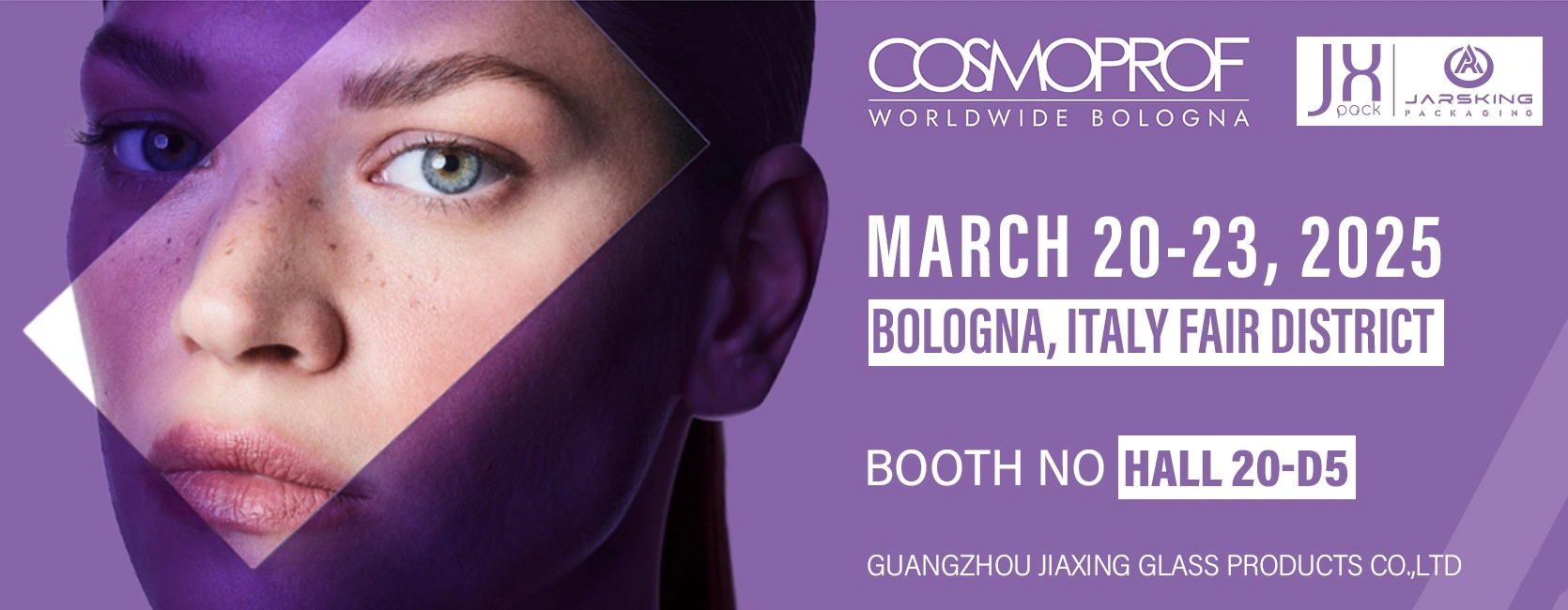
1. Cosmoprof Bologna: The Heart of European Beauty Innovation
What is Cosmoprof Bologna
Cosmoprof Bologna is the world’s leading trade show for the beauty industry, held annually in Bologna, Italy. It serves as the ultimate networking and innovation hub for brands, suppliers, and professionals in the cosmetic, haircare, and skincare industries.
Why is Cosmoprof Important
Global Industry Hub – Brings together over 250,000 attendees from 150+ countries.
Innovation Showcase – Features the latest trends in packaging, formulations, and beauty tech.
Sustainability Focus – Highlights advancements in eco-friendly cosmetics and green packaging.
Regulatory Insights – Provides crucial updates on EU cosmetic laws and compliance.
For brands looking to expand into the European market, Cosmoprof Bologna is an essential event to discover new distribution opportunities, emerging trends, and sustainable packaging solutions.
2. The European Cosmetic Market: Trends, Growth & Future Outlook
The European cosmetic market is a vibrant and dynamic sector, driven by several key trends and growth drivers. Here’s a detailed overview of its current state and future outlook:
Market Overview
Market Size: The European cosmetic market was valued at approximately €96 billion in 2023, making it one of the largest in the world.
Top European Cosmetic Markets (2023 Data):
| Country | Market Value (€ Billion) | Key Strengths |
| Germany | €15.9B | Drugstore & dermocosmetics |
| France | €13.7B | Luxury beauty & fragrance |
| Italy | €12.5B | Professional haircare & skincare |
| UK | €11.0B | Indie brands & e-commerce |
| Spain | €10.4B | Natural & organic cosmetics |
Growth Rate: The market is projected to grow significantly, with a CAGR of 6.36% from 2025 to 2032. Another report suggests a CAGR of 6.9% from 2023 to 2032.
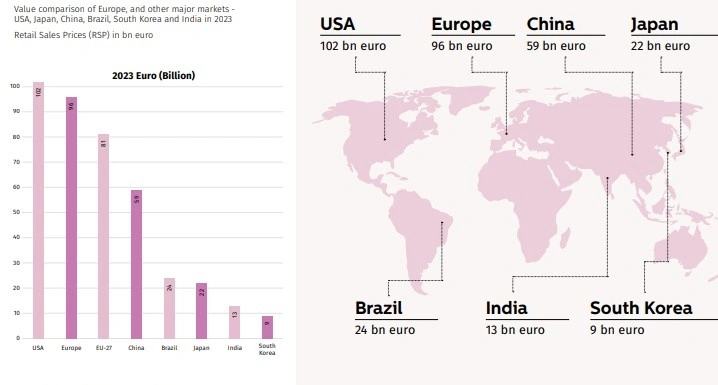
Key Trends
1. Premium Beauty Expansion:
The premium beauty segment is growing rapidly, driven by luxury brands emphasizing exclusive formulations and eco-friendly packaging.
This segment is expected to reach $25.35 billion by 2029, growing at a CAGR of 3.75%.
2. Rise of Sustainable Beauty:
Over 70% of European consumers prefer brands with eco-conscious practices, driving demand for biodegradable packaging, refillable systems, and waterless formulations.
Brands like Henkel and Natura &Co are leading the charge with sustainable packaging goals.
3. Growth of Indie & Private Label Brands:
Indie beauty brands are thriving by offering clean, cruelty-free, and vegan products.
Private-label cosmetics are expanding in retail chains like Sephora and Douglas.
4. Digitalization & E-Commerce Growth:
Online beauty sales in Europe are projected to grow significantly, with 43% of all beauty and personal care sales happening online by 2025.
Technologies like AR and AI-powered skin analysis are revolutionizing the online shopping experience.
5. Demand for Active Ingredients:
Cosmetics made with active ingredients like A.H.As, BHAs, hyaluronic acid, and niacinamide are trending, as they help improve skin tone and address issues like fine lines and wrinkles.
Future Outlook
Technological Innovations: The market is driven by technological advancements in product development, including AI-powered skin analysis tools that enable personalized skincare solutions.
Sustainability and Bioactive Ingredients: The emphasis on natural and sustainable skincare options is growing, with a focus on bioactive ingredients like plant extracts and peptides.
Digital Transformation: The shift to online shopping and immersive digital experiences is crucial for brands to stay competitive, with tools like virtual try-ons and personalized content becoming essential.
Challenges and Opportunities
Market Saturation: The European market faces challenges from market saturation and intense competition, with many brands competing for consumer attention.
Regulatory Compliance: Brands must comply with strict EU regulations, including sustainability and cruelty-free standards, to maintain market presence.
Innovation and Differentiation: The need for innovation and differentiation is high, with brands focusing on sustainable practices, personalized experiences, and digital engagement to stand out.
In summary, the European cosmetic market is poised for significant growth, driven by trends in sustainability, premium beauty, and digital transformation. Brands must adapt to these trends while navigating regulatory challenges to succeed in this competitive landscape.
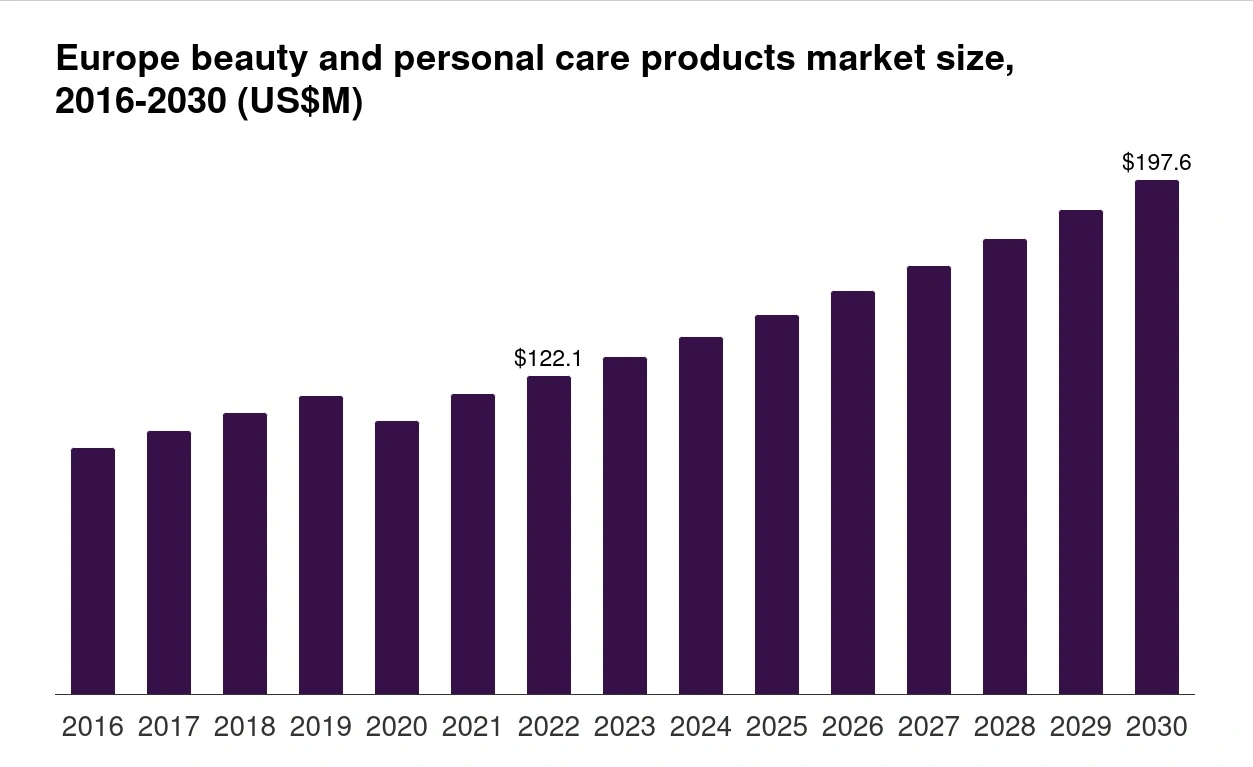
3. Case Studies: Leading Brands Driving Innovation in Sustainability
Natura &Co (Brazil/Europe)
Goal: Natura &Co aims to achieve full circularity of packaging by 2030, ensuring that 100% of its packaging is reusable, recyclable, or compostable. Additionally, the company targets a reduction in packaging material by 20% or more in weight and plans to use 50% recycled plastic content across its packaging.
Strategy:
Recycled Plastic Use: Natura &Co has made significant strides in incorporating recycled plastics into its packaging. For instance, The Body Shop uses 68% recyclable plastic in its packaging, while Natura uses 50%.
Refillable Packaging: The company promotes refillable packaging options to reduce waste. For example, The Body Shop’s refill scheme has removed substantial amounts of plastic from its operations.
Carbon-Neutral Production: Natura &Co is committed to carbon-neutral production processes, aligning with its broader sustainability goals.
Partnerships and Collaborations: The company collaborates with organizations like the Ellen MacArthur Foundation and the Consumer Goods Forum to accelerate its transition to a circular economy.
Henkel (Germany)
Initiative: Henkel is pioneering sustainable packaging innovation, focusing on reducing plastic waste and promoting recyclability.
Impact:
Recycled Plastic Bottles: Henkel has introduced bottles made from 50% recycled plastic in its haircare and household brands, significantly reducing virgin plastic usage.
Social Plastic Packaging: Henkel partners with Plastic Bank to use Social Plastic, which is collected before it reaches oceans or waterways. This initiative not only reduces plastic waste but also supports communities by providing income opportunities.
Circular Economy Commitments: Henkel aims for all its packaging to be reusable, recyclable, or biodegradable by 2025. The company also targets increasing the share of recycled plastics in packaging to 35% in Europe.
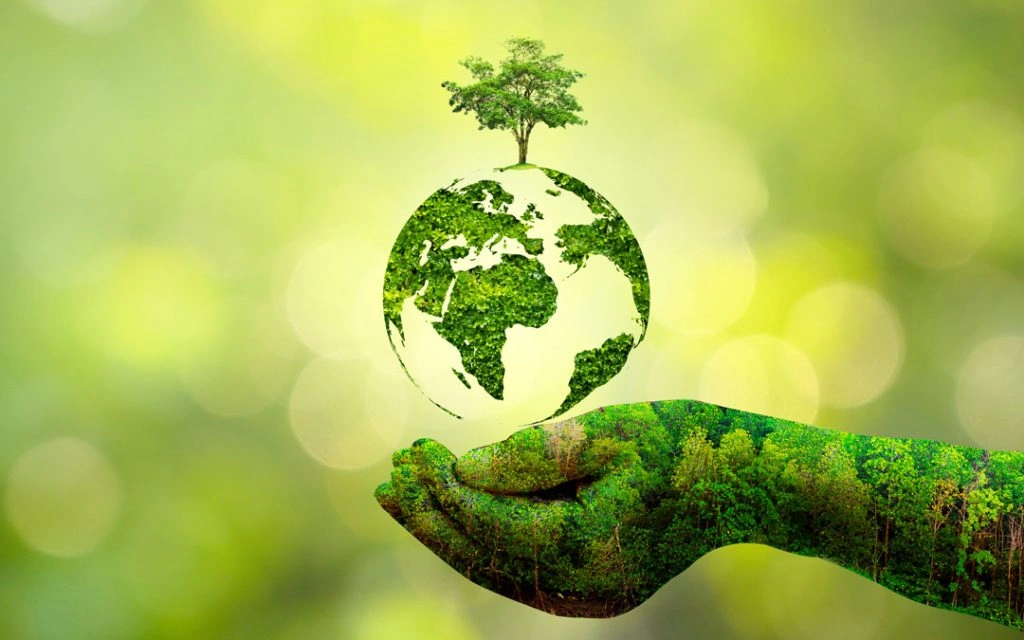
Haeckels (UK)
Rebranding and Focus: Focuses entirely on biodegradable and refillable beauty products.
Sustainable Packaging Solutions:
Mushroom-Based Packaging: Haeckels uses mushroom-based packaging, which is fully biodegradable. This innovative approach aligns with the brand’s commitment to reducing environmental impact.
Vivomer Compostable Packaging: All skin, bath, and body products are packaged in Vivomer, a 100% home compostable material that biodegrades within a year in a healthy compost environment.
Elimination of Secondary Packaging: Haeckels has minimized secondary packaging to reduce waste further, except for fragrances and candles. The brand also includes QR codes on packaging to guide customers on how materials can be reused, refilled, or composted.
L’Oréal (France)
Innovation: L’Oréal has developed paper-based tubes for skincare and haircare products, marking a significant shift towards sustainable packaging.
Partnerships and Initiatives:
Paper-Based Tubes: In collaboration with Albéa, L’Oréal launched the first paper-based cosmetic tubes under its La Roche-Posay brand. This technological breakthrough reduces plastic usage and supports a more sustainable packaging approach.
Refillable Beauty Initiative: L’Oréal is partnering with Loop to introduce refillable beauty products in retail stores. This initiative aims to reduce packaging waste by encouraging consumers to reuse containers.
Sustainable PET Resin: L’Oréal has entered into a multiyear agreement with Loop Industries to use 100% recycled PET resin for its packaging needs. This collaboration supports L’Oréal’s goals in transitioning to a circular plastic economy.
These case studies demonstrate how leading brands in the cosmetic industry are driving innovation in sustainability, focusing on recyclable materials, biodegradable packaging, and refillable systems to reduce waste and promote a circular economy.
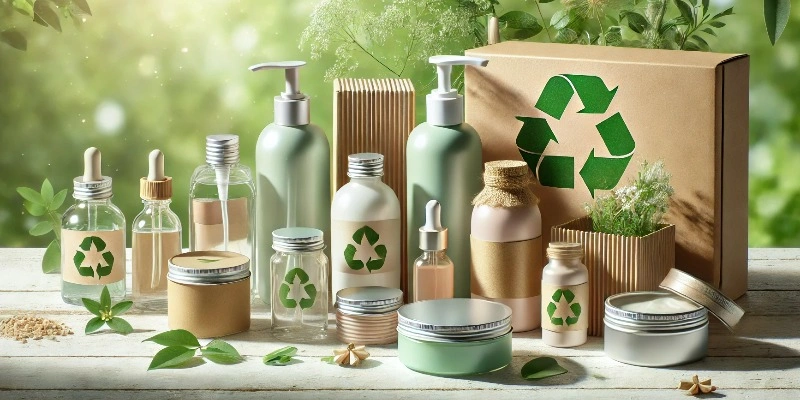
4. The EU Regulatory Landscape: What Beauty Brands Need to Know
The EU regulatory landscape for the cosmetic industry is complex and evolving, with several key regulations and updates that beauty brands must comply with to operate effectively within the European market. Here’s a detailed overview of the main regulatory aspects:
EU Cosmetic Regulation (EC No. 1223/2009)
Overview: This regulation is the primary framework governing the safety and compliance of cosmetic products in the EU. It replaced the previous Directive 76/768/EC and aims to ensure product safety while streamlining procedures for market entry.
Key Provisions:
Product Safety Reports: Manufacturers must prepare detailed safety reports before launching products.
Responsible Person (RP): Brands must appoint an RP within the EU to oversee compliance and be accountable for product safety.
Centralized Notification: All cosmetic products must be notified through the EU Cosmetic Products Notification Portal (CPNP).
Reporting of Serious Undesirable Effects (SUE): RPs must report any SUE to national authorities, which then share this information across the EU.
EU Green Deal & Sustainability Regulations
Objective: The EU Green Deal aims to reduce greenhouse gas emissions by at least 55% by 2030. It includes measures to enhance sustainability in packaging and reduce waste.
Key Provisions:
Packaging Regulations: By 2030, all packaging must be recyclable or reusable. Brands must comply with Extended Producer Responsibility (EPR) laws, which hold manufacturers accountable for waste management.
Sustainable Materials: Encourages the use of sustainable raw materials and production processes that minimize environmental impact.
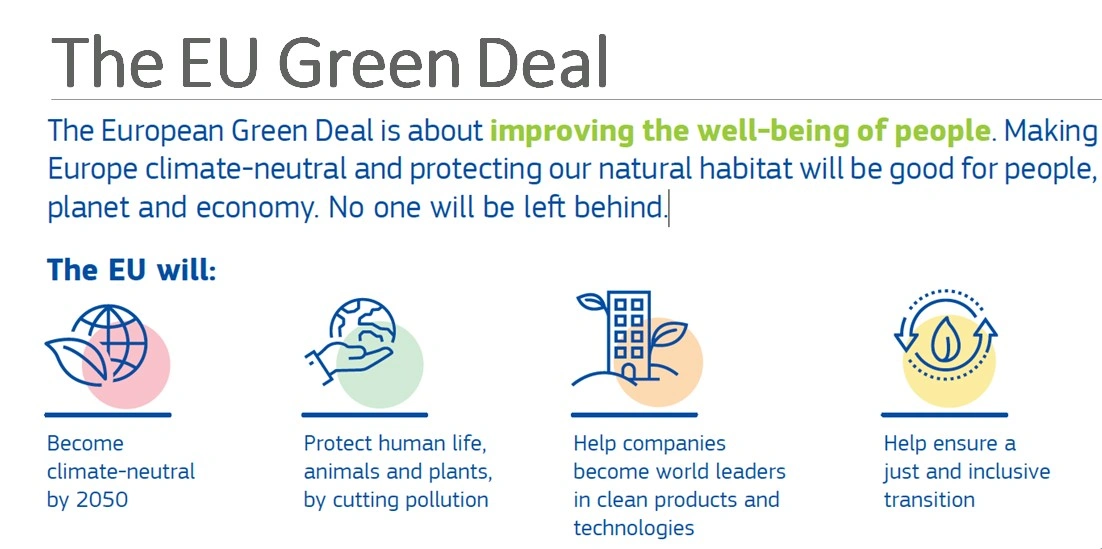
Cruelty-Free and Ingredient Restrictions
Animal Testing Ban: The EU has banned animal testing for cosmetic products since 2013. This ban extends to products using ingredients tested on animals.
Ingredient Restrictions: Over 1,300 ingredients are banned in the EU, compared to only 11 in the U.S. Brands must ensure compliance with these restrictions and use alternative safety testing methods.
Upcoming Regulatory Changes
New Bans and Restrictions: Recent updates include bans on certain nanomaterials and restrictions on ingredients like retinol and kojic acid. These changes will affect product formulations and labeling.
Labeling Requirements: Enhanced labeling requirements, including clearer ingredient lists and environmental claims, are being introduced to prevent greenwashing.
Compliance Strategies for Beauty Brands
Stay Informed: Regularly monitor updates from the European Commission and national authorities.
Appoint a Responsible Person: Ensure compliance by designating an RP within the EU.
Sustainability Focus: Invest in sustainable packaging and production processes to align with EU Green Deal goals.
Ingredient Compliance: Ensure all formulations comply with EU ingredient restrictions and bans.
Alternative Testing Methods: Adopt non-animal testing methods for safety assessments.
By understanding and complying with these regulations, beauty brands can successfully navigate the EU market while contributing to a more sustainable and safe cosmetic industry.
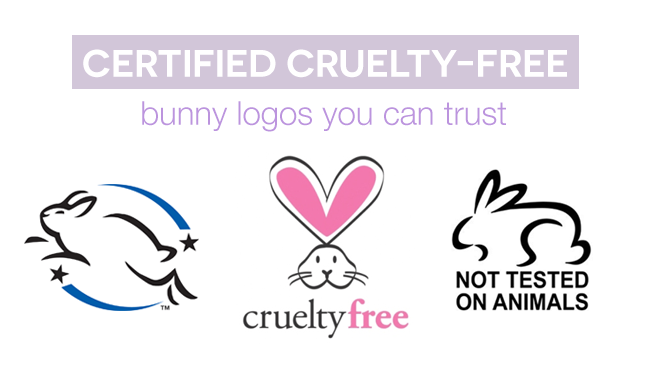
5. The Future of Cosmetic Packaging in Europe
The future of cosmetic packaging in Europe is shaped by several key trends and regulatory changes, focusing on sustainability, innovation, and consumer preferences. Here’s an expanded overview:
Key Trends
1.Refillable and Zero-Waste Packaging:
Refill Stations: Retailers like Sephora and Douglas are introducing refill stations, encouraging consumers to reuse containers and reduce waste.
Luxury Brands: Brands such as Dior and Chanel are offering refillable perfumes and lipsticks, aligning luxury with sustainability.
2.Biodegradable and Plant-Based Materials:
Biodegradable Plastics: By 2025, biodegradable plastics are expected to dominate the market, driven by consumer demand and regulatory pressures.
Mushroom-Based Packaging: Brands like Haeckels are using mushroom-based packaging, which is fully compostable and biodegradable.
Bamboo and Sugarcane Packaging: These natural materials are gaining traction for their sustainability and eco-friendliness.
3.Lightweight and Airless Packaging for E-Commerce:
Glass and Aluminum: Brands like Augustinus Bader and Aesop are using glass and aluminum for sustainable luxury packaging, which is both durable and recyclable.
Airless Systems: These systems reduce waste by minimizing product exposure to air, extending shelf life and reducing packaging material.
Regulatory Landscape
1.EU Green Deal and Packaging Regulations:
Recyclable and Reusable Packaging: By 2030, all packaging must be recyclable or reusable, with minimum recycled content requirements increasing over time.
Extended Producer Responsibility (EPR): Brands must take responsibility for waste management, ensuring packaging is designed with recyclability in mind.
2.Packaging and Packaging Waste Regulation (PPWR):
Gradual Implementation: Starting from 2026, PPWR will govern the full lifecycle of packaging, from design to waste management, aiming for a circular economy.
Innovations and Technologies
1.Advanced Materials:
Bio-Sourced Monomers: Companies like L’Oréal are investing in bio-sourced materials for packaging, aligning with sustainability goals.
Enzyme-Based Recycling: Technologies that enable the recycling of complex plastics are emerging, such as Carbios’ enzymatic recycling process.
2.Digital Tools for Sustainability:
Life Cycle Assessments (LCAs): Platforms like Bluebird Climate help brands assess their carbon footprint and waste impact, guiding sustainable packaging decisions.
Future Outlook
Sustainability as a Norm: By 2025, eco-friendly packaging will become a standard expectation rather than a niche trend, driven by consumer demand and regulatory pressures.
Innovation in Materials: The development of new sustainable materials and technologies will continue to transform the packaging landscape.
Circular Economy Practices: Brands will focus on designing packaging that is fully recyclable, reusable, or biodegradable, aligning with EU circular economy goals.
In summary, the future of cosmetic packaging in Europe is characterized by a strong emphasis on sustainability, driven by consumer preferences, regulatory changes, and technological innovations. Brands must adapt to these trends to remain competitive and compliant with evolving EU regulations.
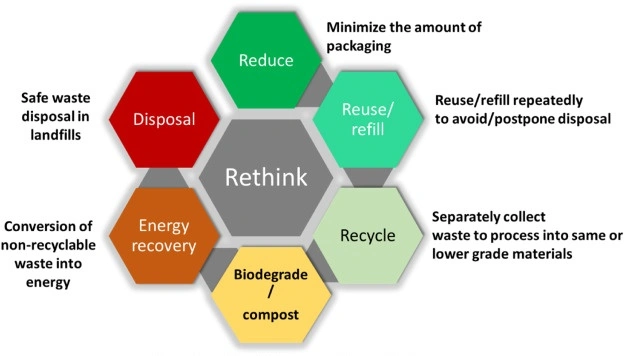
6. Key Takeaways & Opportunities for Brands and Suppliers
Cosmoprof Bologna is a must-attend event for brands seeking European market entry and trend insights.
Premium beauty and sustainable packaging are the biggest growth drivers in the industry.
EU regulations demand strict compliance—brands must adopt eco-friendly and cruelty-free practices.
Refillable, biodegradable, and AI-driven beauty innovations are shaping the future of cosmetics.
For beauty brands, suppliers, and packaging manufacturers, now is the time to invest in sustainable solutions, regulatory compliance, and digital-first strategies.
7. Othilapak: Driving Innovation in Cosmetic Skincare Packaging
As a leading cosmetic skincare packaging manufacturer, Othilapak is at the forefront of providing sustainable, innovative, and customizable packaging solutions for beauty brands worldwide. With a strong focus on eco-friendliness, luxury aesthetics, and regulatory compliance, Othilapak partners with brands to enhance product presentation, sustainability, and consumer engagement through cutting-edge packaging technology.
What Othilapak Offers
1.Eco-Friendly Packaging:
Biodegradable Materials: Othilapak offers packaging made from biodegradable materials, reducing environmental impact and aligning with consumer demand for sustainable products.
Refillable Solutions: Refillable packaging options are designed to minimize waste and encourage a circular economy.
Recyclable Packaging: Ensuring that packaging is fully recyclable, Othilapak supports brands in reducing their carbon footprint.
2.Luxury Aesthetics:
High-End Glass: Othilapak provides premium glass packaging options that enhance the luxury feel of skincare products.
Airless Bottles: Airless systems protect products from air exposure, extending shelf life and maintaining product efficacy.
Premium Finishes: Customizable finishes and designs ensure that packaging aligns with luxury brand identities.
3.Customization:
Tailored Designs: Othilapak works closely with brands to create unique bottle shapes and designs that reflect their brand identity.
Sustainable Material Choices: Offering a range of sustainable materials, Othilapak helps brands choose options that align with their eco-friendly goals.
Brand-Centric Packaging: Each design is crafted to enhance brand recognition and appeal through premium finishes and distinctive shapes.
4.Regulatory Compliance:
EU Sustainability Regulations: Othilapak ensures that all packaging meets EU sustainability regulations, including recyclability and reusability standards.
Safety Standards: Packaging is designed to comply with strict EU safety standards, ensuring consumer safety and product integrity.
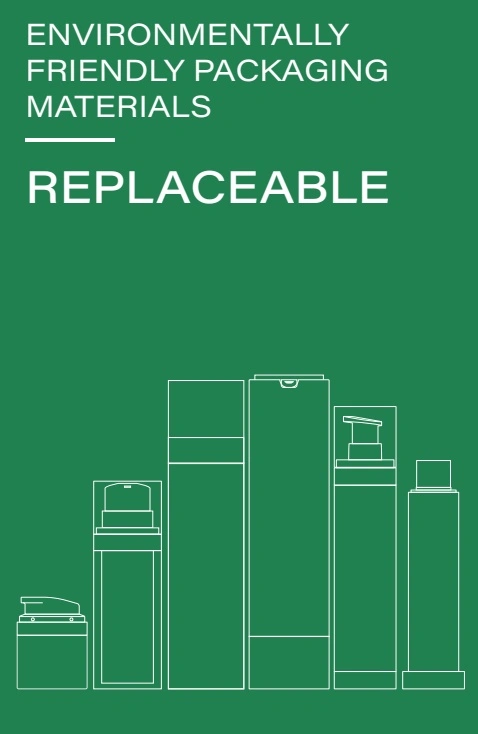
Othilapak’s Approach to Innovation
In-House Manufacturing: With advanced factories equipped with state-of-the-art machinery, Othilapak maintains control over production timelines and consistency, ensuring high-quality packaging solutions.
Reliable Supplier Network: Partnerships with vetted suppliers enable Othilapak to scale production while maintaining quality standards.
Cutting-Edge Technology: Utilizing 3D modeling, rapid prototyping, and material analysis, Othilapak develops efficient and visually striking packaging designs that meet evolving client needs.
Sustainability Initiatives
Scaling Sustainable Production: Othilapak invests in research and development to scale up production of eco-friendly materials and designs, addressing challenges such as material availability and manufacturing processes.
Circular Economy Models: By focusing on recyclable, biodegradable, and refillable packaging, Othilapak supports brands in transitioning towards circular economy models.
Conclusion
Othilapak is a pioneering force in sustainable cosmetic skincare packaging, offering a comprehensive range of eco-friendly, luxury, and customizable solutions. By partnering with Othilapak, beauty brands can enhance their sustainability credentials, improve product presentation, and engage consumers more effectively, all while ensuring compliance with stringent EU regulations. As the industry continues to evolve, Othilapak remains committed to driving innovation and supporting brands in their journey towards a more sustainable future.
8. Final Thoughts
The European cosmetic market is evolving faster than ever, driven by sustainability, luxury innovations, and regulatory advancements. Whether you’re a beauty brand, supplier, or investor, staying ahead of these trends is essential for long-term success.
Attending Cosmoprof Bologna is one of the best ways to navigate this landscape, connect with global industry leaders, and explore the latest innovations in beauty and packaging.
